The Jenolan Caves tours explore 340 million-year-old caves, they are believed to be the oldest open caves in the world. These are our top tips for planning your visit and getting the most from your time above and below ground.

The concept of exploring deep into the centre of a mountain has fascinated me since well before Lara Croft and the Tomb Raider series made it look seriously cool back in 2001. This trip to the Jenolan Caves, the best known of Australia’s 20-odd cave systems, has literally been on my life list for decades.
If you want to see caves then these have to be among the best. They are one of the eight protected areas that make up the World Heritage Listed Greater Blue Mountains Area and clay within the caves has been scientifically dated back 340 million years making it the oldest known cave system in the world.
The tours we joined on this adventure took us into some dramatic and beautiful caves to appreciate natures architecture and art. There are many options to choose from that explore hidden chambers and tunnels highlighting the many types of crystal growth, fossils and the river network that carved out the ancient cave system.
For the more adventurous you may choose the Elder cave, put on a headlamp and journey underground where you’ll climb, squeeze and crawl through the narrow gaps in an introduction to caving.
Table of Contents
Update: Some things to know before you go
A series of weather events in 2021 and subsequently have hit the Jenolan area hard. Access roads into the caves became impassable, caves were flooded, infrastructure was damaged and they were forced to close for several years. At the end of January 2023, the caves reopened to visitors, they are excited to welcome people back onto cave tours but all is not as it was before, there are a few changes to be aware of.
- Access into the Jenolan Caves has changed, you must now arrive and leave via Edith Road, the one-way road is actively managed so you will need to wait for the next escort vehicle or shuttle bus in your direction. The detour adds about 30 minutes to your trip coming from Sydney / Blue Mountains.
- Many of the caves, tours and walks that you may have been on in the past or heard about can’t currently be offered due to damage, ongoing rock falls, remediation works or staff levels available to conduct tours. That said the 5 caves currently being toured are incredible and still well worth the trip out for.
- In the article below I’ve made updates to show the changes we are aware of that will impact visitors but also retained information on the entire complex for completeness. Please check the official website or give them a call to ensure the tour you want is available before you make the trip out there.
How were the Jenolan Caves formed?
The caves at Jenolan are formed from limestone, layers of coral and shells that were deposited there 450 million years ago when this was coastal ‘Australia’ and still beneath the sea. As the tectonic plates moved they were flipped up and over, rising into mountains, inverting the layers of fossils and pushing the coast back hundreds of kilometres to the east.
The groundwater absorbed carbon dioxide from the air making it acidic and as that is pushed up against the limestone rock over thousands of years it gradually erodes it. As one of our guides simplified it, the formation of a cave involves two rocks, one stays and one goes.
We arrived at the caves early, about 20 minutes before opening time and spent a bit of time watching a lyrebird scratching up a storm at the edge of the car park before heading down to find the booking office and taking a look around.
There’s a board that shows the various cave tours available with a difficulty level based mostly on the number of steps inside the cave. Unless you have a lot of difficulty with steps, that number won’t matter too much as you’ll stop often to see the cave so you aren’t doing them all in one go.
Another board shows the tours and times they are running that day. If a tour disappears from the board don’t worry, that just means it’s fully booked, not that it’s no longer running.
Which Jenolan cave tours to choose
The Jenolan Cave complex follows the underground river and is made up of hundreds of entrances and tunnels throughout the mountain and underground. The area that’s open to tourists comprises eleven stunning caves that are lit and open to explore on scheduled tours throughout the day. These currently include:
- Lucas Cave – this one has several large chambers, the largest is 50 metres high with fantastic acoustics in the Cathedral Chamber. The broken column formation in the Exhibition Chamber is also a highlight.
- Imperial Cave – One of the easiest caves for visitors with reduced mobility or fitness and with great fossil deposits including the bones of Tasmanian Devils.
- Chiefly Cave – In 1880 this was the first cave in the world to be lit by electric lights and for nostalgia two of the chambers are still lit with coloured lights.
- Temple of Baal – this wet cave is still growing and evolving, there are two main chambers and they are spectacular. The Angels Wing shawl formation is 9 metres tall and one of the best examples in the world.
- Orient Cave – Not discovered until 1904 this cave has the most intricate and complex formations. It’s hard to pick one ‘must-see’ from the list as they are each unique and fascinating but this would be mine.
Other caves in the complex that are not currently available to tour or access are:
- The Grand Arch – coming in from Sydney you’ll actually drive through the arch, it’s a massive cave and the meeting point for some of the cave tours.
- River Cave – this one houses some of the most famous features, including the Minaret, the Grand Column and the Queen’s Canopy, you’ll also see part of the underground River Styx that is responsible for the cave network on this tour.
- The Pool of Cerberus – In this lower branch of the River Cave, you’ll see unusual aragonite formations, the Bath of Venus and a section of the river that forms the Pool of Cerberus.
- Nettle Cave – is located between the Grand Arch and the Devils’ Coach House. The cave is open and free to access, you can make your way up here without a guide.
- Ribbon Cave – Named for its excellent display of ‘ribbon’ helictites along the 60-metre cave.
- Diamond Cave – this is a branch of the Imperial Cave and is lined with white crystal formations tinted with pink. The highlight is the ‘Gem of the West’ a crystal formation comprising helictites, stalactites, stalagmites, shawls and wave crystals. You can also access a section of the underground river on this tour via a spiral staircase.
- Jubilee Cave – Discovered in 1893 it is the longest cave and a small group tour but as it’s a distance away from the others it’s a longer tour.
- Elder Cave – This was the first cave in Jenolan opened to tourists after it was discovered in 1848. It’s trickier to access than the others and is used for adventure caving. The Plughole tour will take you in here. You’ll need a headlamp (provided), no fear of enclosed spaces and a good level of fitness for this tour.
You can find more detail on each cave tour and other visitor information on the Jenolan Caves official site.
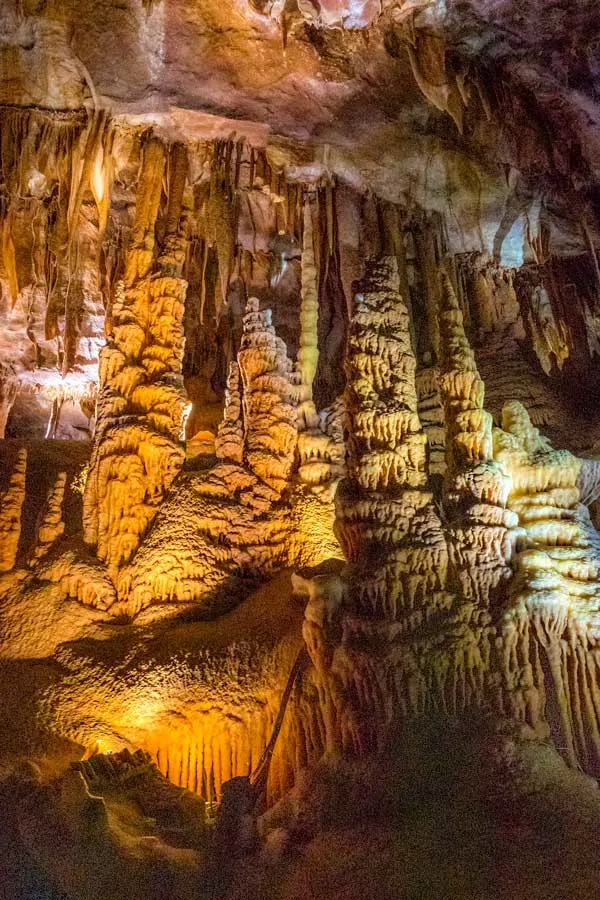
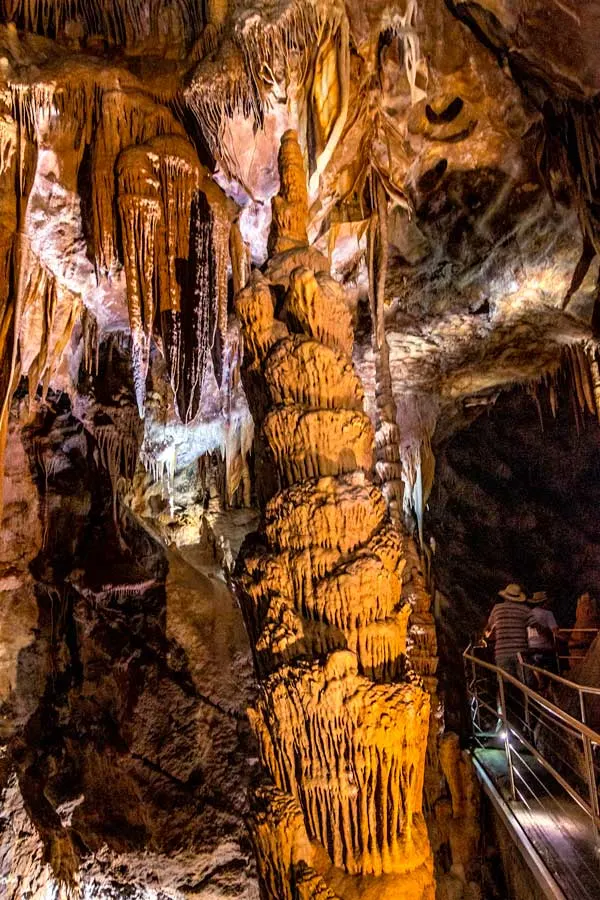
The main caves at Jenolan must be visited as part of a guided tour, this ensures the safety of visitors and prevents damage to the cave interiors. Part of the protocol that protects the fragile natural heritage is the airlock doors and low-emission lighting that is only left on for the minimum time while the tours are in progress.
In the past, there has been one tour you could do on your own and with free access, the Devil’s Coach House and Nettle Cave. The Devil’s Coach House is the largest chamber at Jenolan and when the river runs in flood it passes through the cave. Floods and bushfires in the past few years have damaged this track and cave and access is not currently permitted.
The Nettle Cave is the upper level and is open to air movement unlike most of the other caves in the complex. It’s a dry cave making the formations appear quite different from others but still very interesting.
We found it really hard to decide which cave tours to book out of the extensive choice available. I thought I had made my choice well before we left Brisbane but talking to the staff on the ticket desk when we arrived I still ended up making a last-minute change.
On the positive side, every person we spoke to during the day, and they came from a variety of fitness levels, age groups and interests, everyone loved the caves they’d seen so it would be difficult to make a wrong choice.
The tour times run back to back but you really can’t book consecutive tours as you need to get from one endpoint to the next start point and for obvious reasons they can’t wait for you. We decided to do one tour in the morning and another in the afternoon with lunch and fitting in some of the walking tracks and free caves into any free time we had.
We knew as soon as we walked into the first cave that we would be coming back to do some more. We both love nature and are fascinated by natural history and this place had us both in our element.
In hindsight, you could fit in a third cave if you have the full day here perhaps even 4 if you were staying overnight and not wanting to drive out before dark but we also enjoyed having enough time to take it all in and also looking around the blue lake and waterfall. I’d highly recommend staying overnight if you can possibly fit it in.
We settled on the Temple of Baal and Orient Cave tours and then explored the rest of the complex in the available time between and after.
The Temple of Baal Cave
The first cave we entered on the 9.30 am tour was the Temple of Baal. One of the advantages of getting there early was that there were only 10 of us on the tour rather than the max group of 25.
Originally this cave was discovered and accessed off the Grand Arch and River Cave but in the 1950s a man-made tunnel was cut above Jenolan House to make for easier access.
The 120-metre-long corridor is called the Binoomea Cut which in the local Aboriginal dialect means ‘dark place in the mountain’ which is pretty descriptive of the path they blasted through solid rock. It was opened in 1954 providing access through the corridor with heavy airlock doors at either end to protect the temperature and moisture levels within the cave.
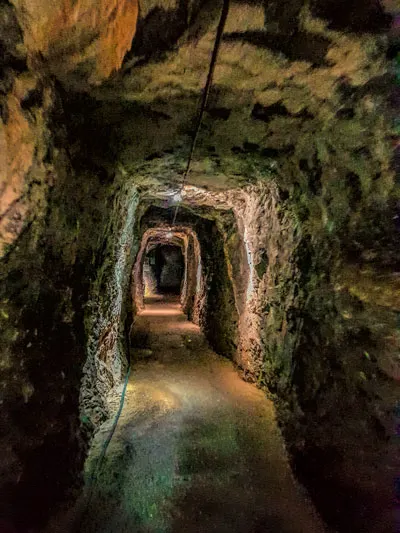
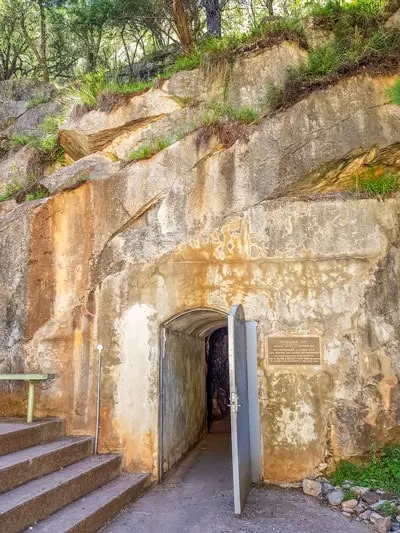
The cave is not a temple or consecrated space but gets its name from the story of Elijah and the prophets of Baal in the Old Testament. The Temple of Bel (also known as Baal) was one of the best-preserved ancient temples in what is now Syria but it was destroyed by Islamic State militants in August 2015.
Once inside the cave, the lights are turned on and you can appreciate the size of the first chamber and the beauty of the crystal structures before heading down the spiral staircase known as the dragon’s throat. This is one of the easier caves with 288 stairs to climb down and back up.
The caves are all giant caverns inside a mountain so some step and ladder climbing can’t be avoided if you want to see them but you won’t need more than average fitness and mobility to be comfortable in the Temple of Baal.
The Temple of Baal is a wet cave, which simply means it still has a natural water flow seeping through it and therefore it is still developing, evolving and growing. This was fascinating to see and our guide pointed out a few points where you could see both flowstone and tiny crystal structures starting to form.
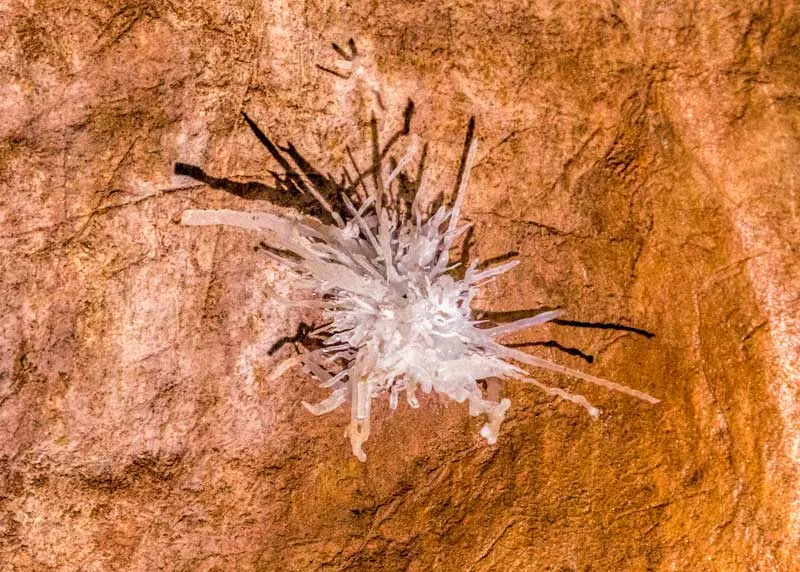
Flowstone is one of the fastest-growing crystalline structures and you can see in the 60-year-old Binoomea cut that a significant patch has already begun to form where water flows through the rock that was exposed during the tunnelling process and now drips down the wall.
Inside the cave, high up in the second chamber, you see a natural structure that represents Baal who the cave is named for. If you look closely you can see the features of his face in the formation.
Baal was an ancient deity responsible for fertility, both the ability of the earth to produce crops and of the growth of its population. In this chamber, the lights play over the crystal and rock features and the guide sets chamber music playing which is both eerie and magical in the space.
The most recognised feature of this cave is the angel’s wing shawl formation, at 9 metres tall this is one of the largest cave shawls in the world and is truly stunning. The photos below see it from 2 different angles.

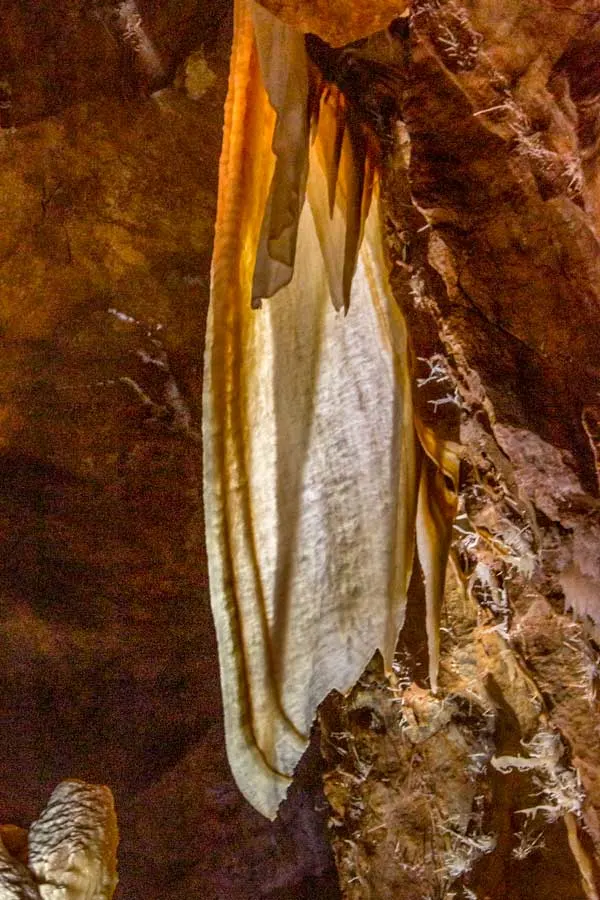
The Orient Cave
The Orient Cave is also entered through the Binoomea Cut tunnel. Our group on this afternoon tour was larger, there were 20 of us and they can take up to 25 people in a group. As you enter the cave there are dim lights on, once everyone is settled and comfortable you are asked to turn off watch faces, phones, cameras or anything else that emits a light source and the cave lighting is turned off.
You are deep inside the mountain which is pitch dark, of course, probably the darkest you have ever experienced, you literally can’t see your hand an inch in front of your face. This is incredible as of course when this cave was first discovered and explored it was by candlelight or maybe a lantern, how they ever appreciated the wonder that was inside and moved through them without damaging the fragile structures is impressive in itself.

The Orient Cave has 358 steps and is classed as an easy cave, suited to most visitors. In some parts, you are moving through narrower spaces that are a bit more restricted but you comfortably walk the whole way, there is no climbing or squeezing through gaps.
We walked wearing our cameras on cross-body straps and camera packs with no problems so it’s not a tight space but Drew did note that just once or twice his shoulders touched the rock walls on either side so I guess they were a bit narrower up higher on the wall, not a problem at my height.
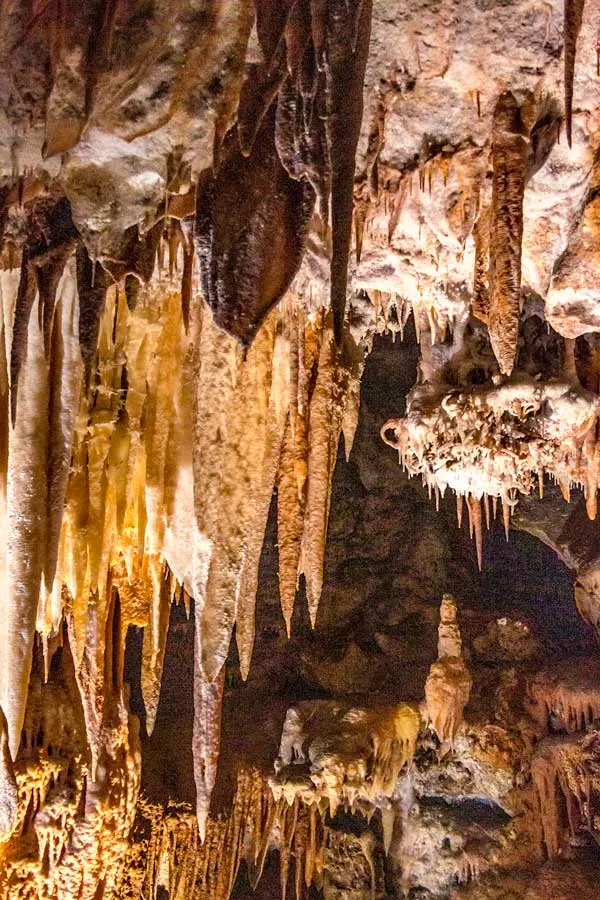
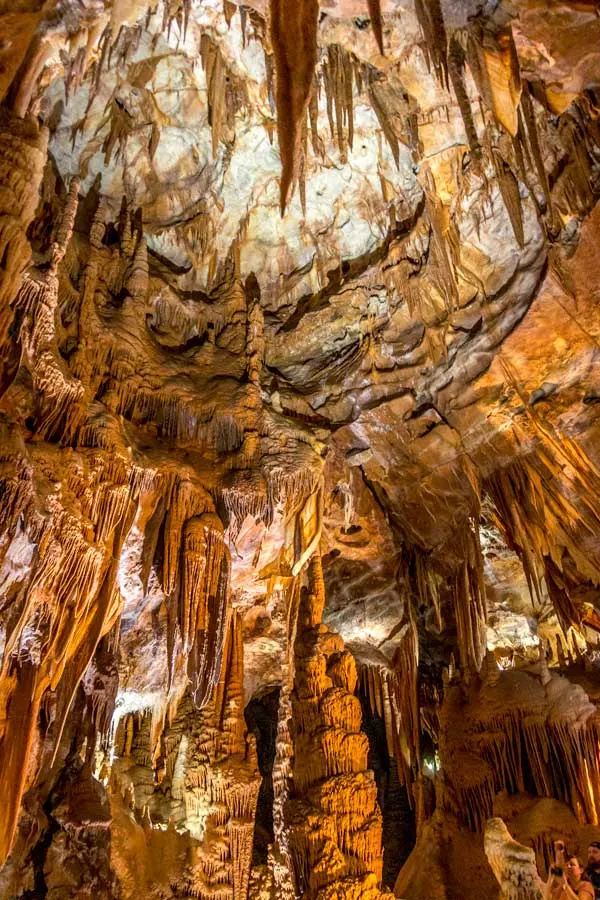
The lighting level is optimal to observe with the eye and to preserve the fragile structures but photography is difficult. Normally in low light, you’d use a tripod but that is too risky in the space. These images give an idea of the intricate formations inside of the cave but honestly, it is so much more beautiful to see it in person.
The Blue Lake and River Walk
Sadly access to this area is currently not possible due to rock fall and ongoing remediation work. The Jenolan River Walk is one of the beautiful and popular walks from the Jenolan Caves. It is accessed through the damaged Grand Arch and you then veer off to the right around the lake. This is an easy 2.1 km circuit through the bush, past lakes and waterfalls and over a swing bridge, one to keep on your wish list for the future.
Along the way keep watch for the platypus that live in the lake, wallabies came down the hillside beside us, water dragons and lizards were basking in the sun, Superb Lyrebirds scratched away looking for food and this is considered generally a good bird-watching track for Bellbirds with their distinctive call and Rock Warblers.
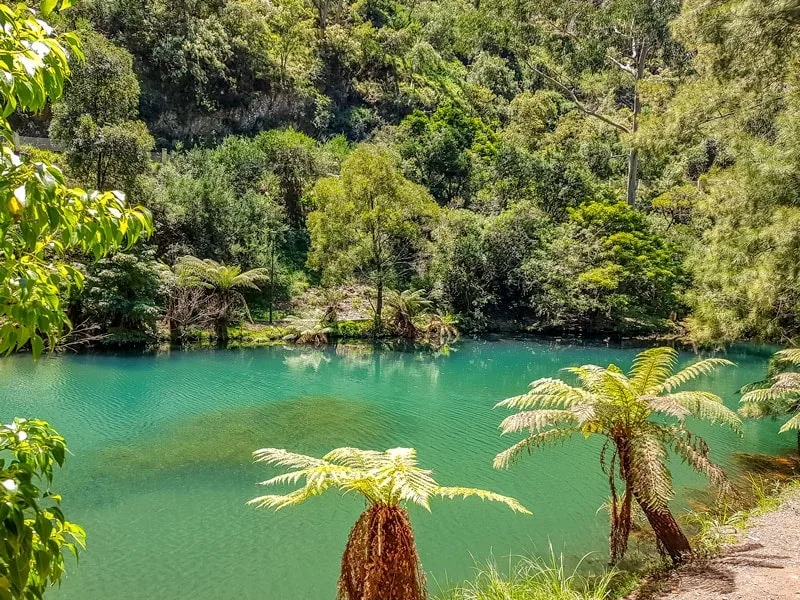
The stunning blue-green tones of the Blue Lake come from the limestone particles dissolved in the water. It’s very clean and clear making it the perfect spot to watch for platypus especially in the spring when their natural mating season behaviour makes them easier to spot.
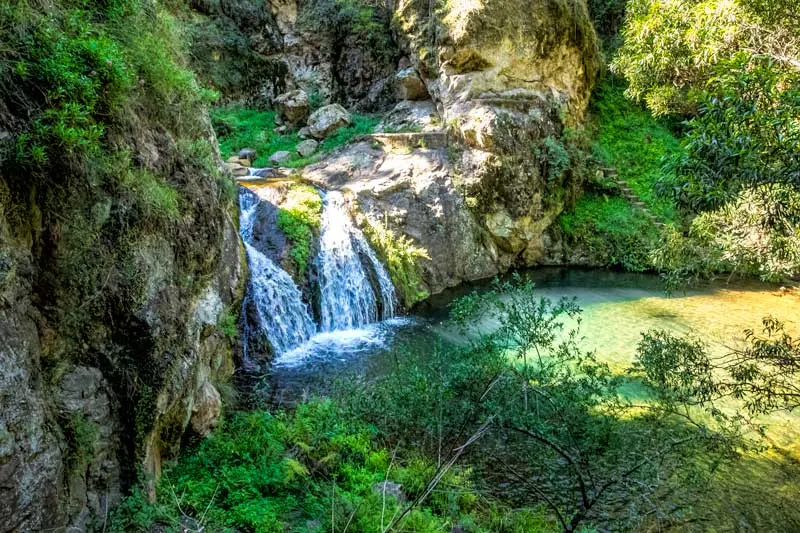
Just past the swing bridge you are these gorgeous small falls that flow into a crystal clear pond. While you can’t swim in the upper lake to protect it as a habitat for wildlife you were able to cool off in this pool and picnic nearby.
Getting to the Jenolan Caves
We flew into Sydney to spend a few days in the Great Blue Mountains area and collected our rental car at the airport before heading out to our base for the week at the Fairmont Resort in Leura.
The Blue Mountains are the ideal base for a day trip out to the Jenolan Caves taking around 90 minutes to get there, or 3 hours if you make the trip direct from Sydney Airport. The Great Western Highway is a good quality road most of the way and the small towns you’ll pass along the way offer some great cafes. A notable shout out to Kickaboom in Glenbrook and Anonymous in Blackheath but we had some great foodie experiences throughout our stay. (Note as mentioned above current access restrictions require a detour from the road we took and add around 30 minutes to your trip).
I had read some horror stories about the roads directly into the caves but while the last section is windy through the hills and single lane in places there is very little traffic and the few times we met vehicles going the other way it was a smooth give way process. In general, if you do meet traffic on the one-way section, uphill gives way to downhill and common sense prevails. If you’re still on 2 lanes and a vehicle is coming through the single-lane section, wait for it to pass or pull to the left to let it through.
One thing we did notice through this section was wildlife on the side of the road, wallabies are common and we pulled over at a rest stop to watch them for a while. Another surprise was to see a superb Lyrebird run across the road in front of us, while these aren’t as rare as the Alberts Lyrebird in Queensland it was something very different and we weren’t expecting to see one on the roadside.

We were chatting later in the day with a woman from the USA on one of the walking trails. She was in Australia with her son and they’d picked up a vehicle in central Sydney, her first time driving on the left and although she found leaving the city a bit nerve-wracking she wasn’t phased by the country roads coming in.
If single lanes are a big issue for you there is an alternative. The road from Oberon is 2 lanes the whole way but it is a bit steeper and makes for a long drive if coming in from the direction of Sydney or the Blue Mountains.
Where to stay around the Jenolan Caves
Most people visit the Jenolan Caves on a day trip as we did but with 13 cave tours plus a range of walking tracks in the surrounding hills, it would take much longer to really ‘see’ the Jenolan Caves. For those that can spend a night or two here, there is accommodation on-site at the historic Caves House Hotel.
The hotel was built in 1897 as a wilderness retreat for wealthy guests. It has maintained its character as a beautiful heritage hotel decorated in the style of the late Victorian and early Edwardian eras. Don’t expect to find TVs and phones in the rooms but those who were staying there seemed genuinely taken by its heritage charm and welcoming staff.
See accommodation options at Jenolan Caves

Interested? Save these images to Pinterest.
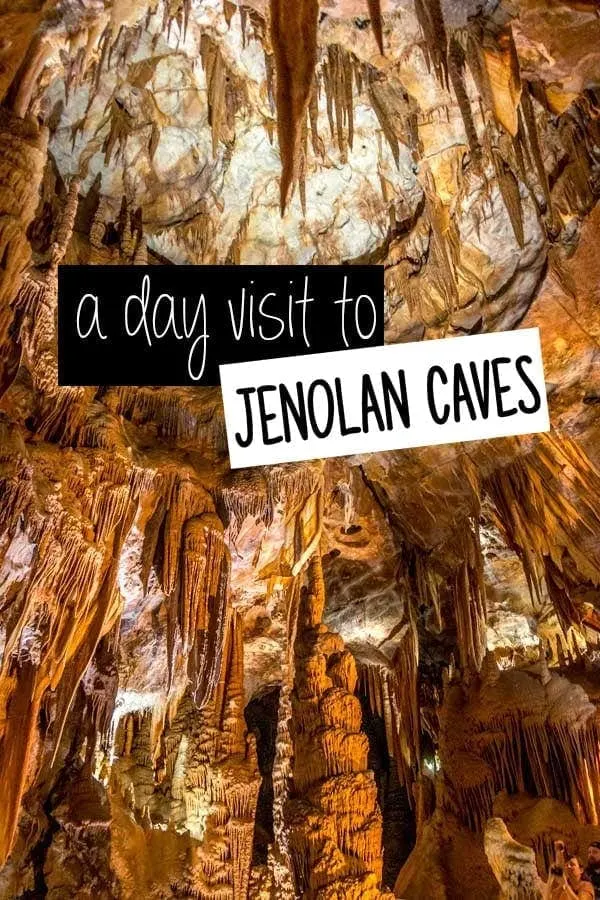
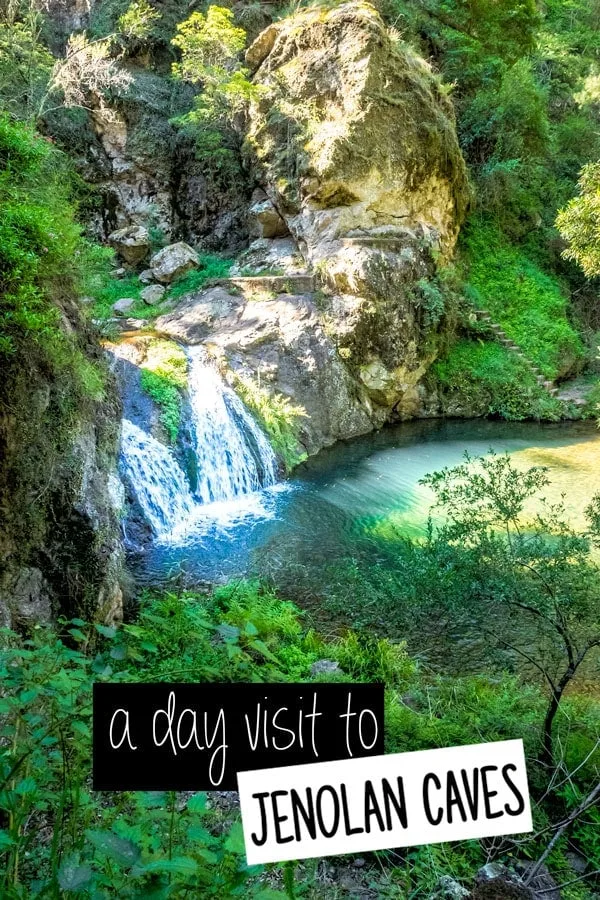
Kathy@DavesTravelCorner
Thursday 21st of March 2019
I never knew that the world's oldest cave is located at Australia. Nice :)